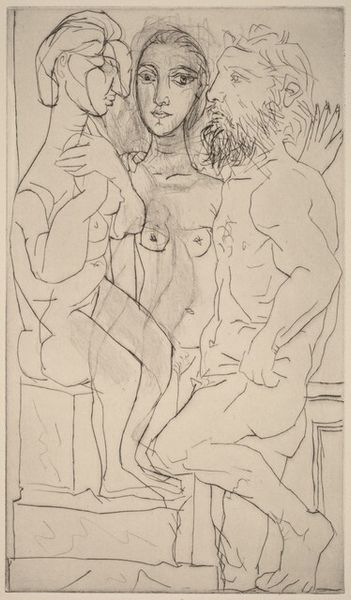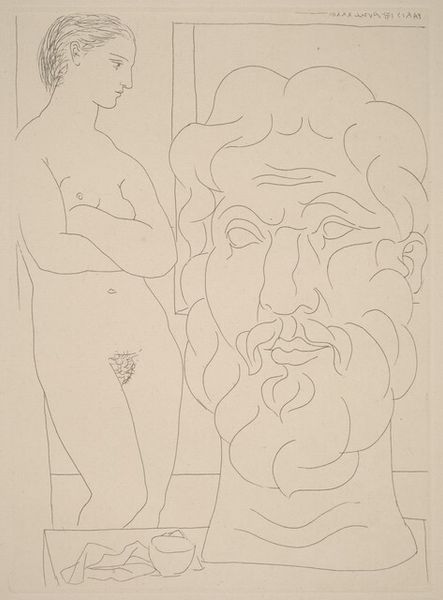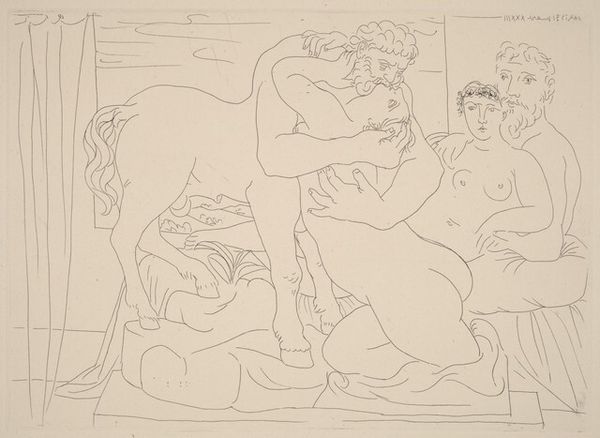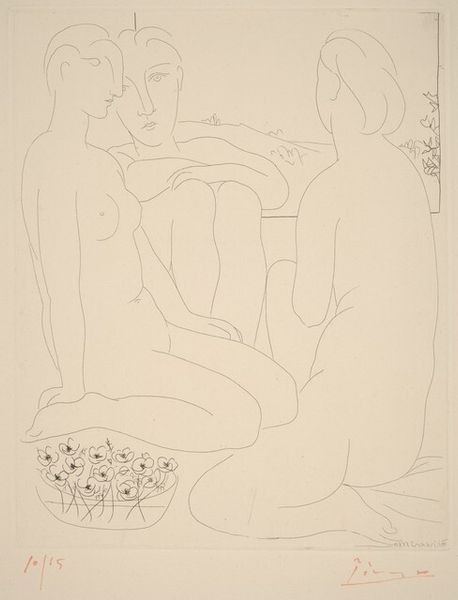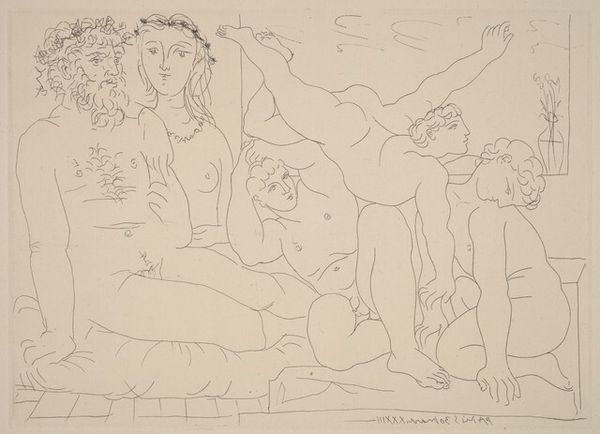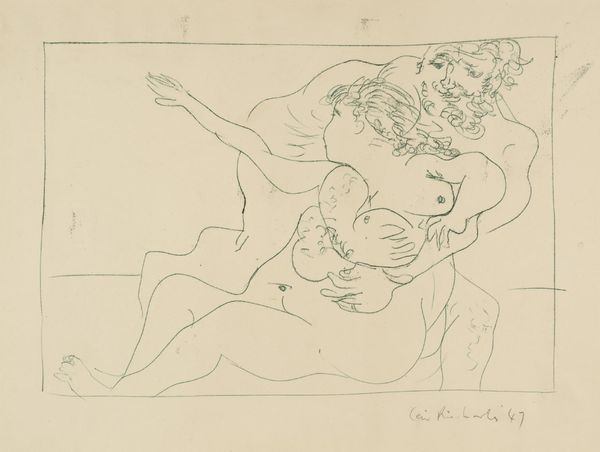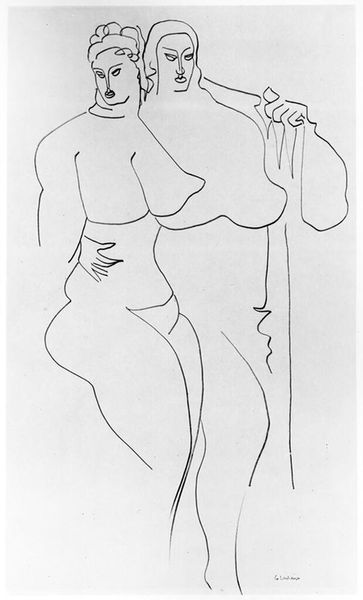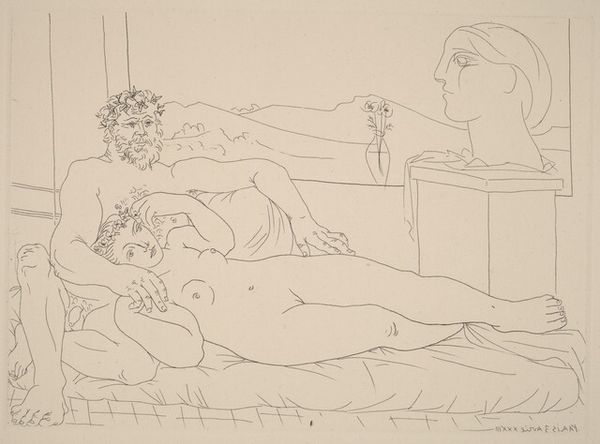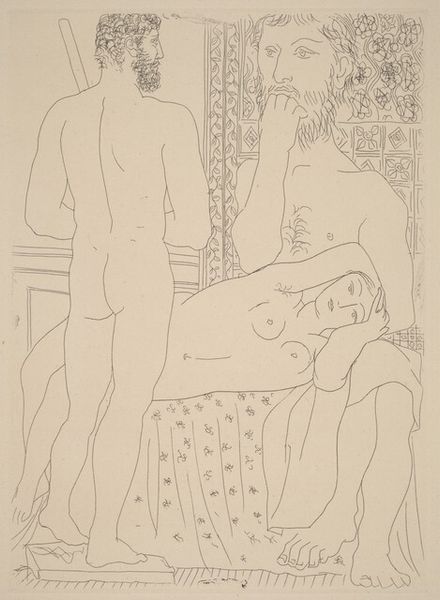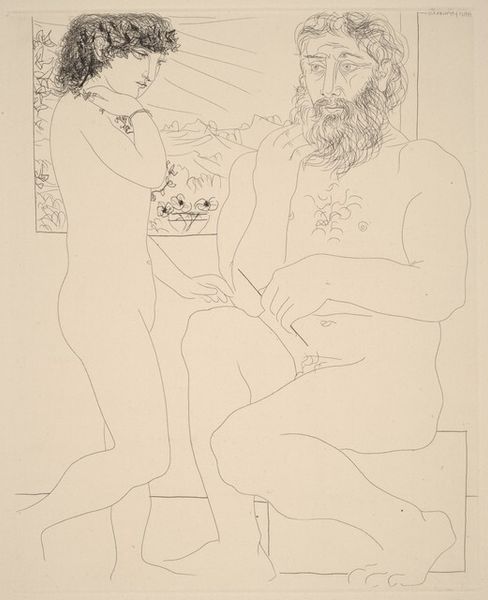
A Young Greek Sculptor with Sculptures of a Man and an Ephebe (Jeune sculpteur Grec avec sa sculpture: un homme et un éphèbe) 1933
0:00
0:00
print, etching
#
portrait
#
cubism
# print
#
etching
#
figuration
#
form
#
ancient-mediterranean
#
portrait drawing
#
nude
Dimensions: plate: 26.7 x 19.2 cm (10 1/2 x 7 9/16 in.) sheet: 50.2 x 38.7 cm (19 3/4 x 15 1/4 in.)
Copyright: National Gallery of Art: CC0 1.0
Curator: This is Pablo Picasso's "A Young Greek Sculptor with Sculptures of a Man and an Ephebe," an etching from 1933. What are your first thoughts, Editor? Editor: Elegant, almost melancholic in its simplicity. The spare lines give it an unfinished quality, like a glimpse into the creative process itself, no? A raw sort of vulnerability too, perhaps. Curator: Well, this print aligns with Picasso's engagement with classical themes in the early 1930s. The focus on line emphasizes form and references ancient Greek sculpture—a tangible material culture— while also revealing the production processes behind it. Editor: Ah, that tension between form and line. To me, the lack of shading pushes it into the realm of idealized forms. Makes one wonder, what is lost and what is gained when an image becomes reduced, abstracted? There is a lot of emotional intensity despite the cool detachment. Curator: Exactly. It brings to light Picasso’s artistic method while it makes the viewer engage more deeply with a piece. Look at how the sculptures embody the values attached to form, such as masculinity and youth. Their meaning comes from not only their representation but how they're represented as well: their consumption and labor involved in both production and depiction. Editor: It also triggers memories of my old art school days, the endless figure drawing! And, thinking about the '30s, did he consciously play with notions of masculinity and the heroic in an era hurtling towards such brutal conflict? Curator: One could see it that way. By evoking antiquity, and deploying the artistic tools used for producing this work, it critiques contemporary values—including classical values themselves—while highlighting a specific moment in material and labor conditions. Editor: Interesting, a window into production methods… something so easily overlooked. Well, it's stirred up plenty for me to muse on. Curator: And on that note, hopefully our listeners, too, will reconsider the importance of means and materials, labor and consumption as ways to look and evaluate at an art piece.
Comments
No comments
Be the first to comment and join the conversation on the ultimate creative platform.
